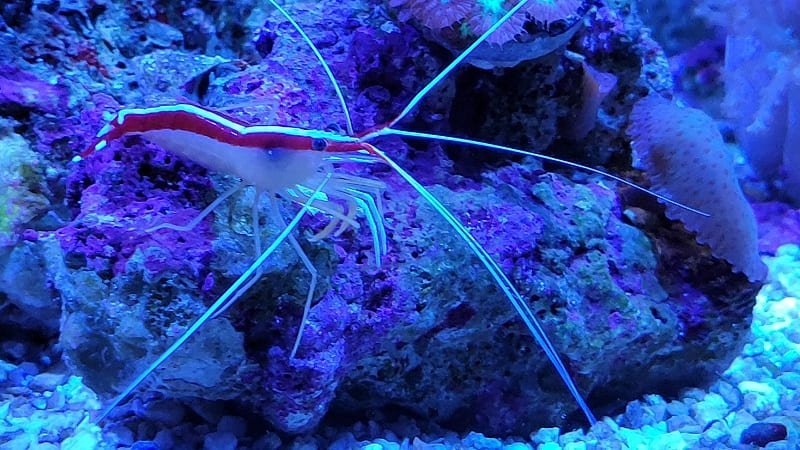Cleaner Shrimp
Underneath the turquoise waves of our oceans lies a world of breathtaking wonders, where vibrant marine life thrives and displays fascinating symbiotic relationships. Among the myriad of intriguing creatures that inhabit coral reefs, one species stands out for its incredible role as nature’s underwater janitor—the cleaner shrimp. Join me as we dive into the enchanting world of cleaner shrimp and explore their remarkable characteristics, behaviors, and their vital contributions to the delicate balance of marine ecosystems.
A Colorful Introduction:
Cleaner shrimp, scientifically known as Lysmata amboinensis or Lysmata cleaner, are small, eye-catching crustaceans found in tropical and subtropical waters around the globe. These shrimp exhibit vivid coloration, ranging from shades of red, orange, and yellow, making them a striking sight amidst the vibrant backdrop of coral reefs.
Unique Symbiotic Relationships
Cleaner shrimp are best known for their symbiotic relationships with various reef fish species. They establish cleaning stations, often situated on corals or rocky outcrops, where they offer their services to fish in need of thorough grooming. The relationship benefits both parties involved—the cleaner shrimp obtain a meal, while the client fish have parasites, dead skin, and bacteria removed from their bodies, promoting their overall health.
A Delicate Dance
The dance between cleaner shrimp and their fish clients is a mesmerizing spectacle. The shrimp perform a characteristic motion, known as the “cleaning dance,” to attract potential clients. By waving their antennae, they signal their availability and advertise their cleaning prowess. The client fish, recognizing the invitation, approach the cleaning station and adopt specific postures to allow the shrimp to access hard-to-reach areas of their bodies.
Specialized Cleaning Tools
Cleaner shrimp are equipped with remarkable adaptations that enable them to provide an efficient cleaning service. Their front pincers are modified into specialized grooming appendages, called chelipeds. These chelipeds are dexterous and equipped with fine bristles, allowing the shrimp to delicately remove parasites and debris from the scales, fins, and even the inside of the fish’s mouth without causing harm.
Community and Reproduction
Cleaner shrimp live in small colonies, forming a close-knit community. They establish territories and defend them from rival groups, ensuring a consistent food source. Within these colonies, the shrimp engage in courtship rituals, where females release pheromones to attract males. After mating, the female carries fertilized eggs beneath her abdomen until they hatch into larvae, which then venture into the open water as part of the planktonic community.
Conservation Considerations
While cleaner shrimp populations are generally stable, they face potential threats from habitat destruction, overfishing, and water pollution. The loss of coral reefs and degradation of marine environments can disrupt the delicate balance of cleaner shrimp communities, adversely impacting both their survival and the health of associated reef ecosystems. Conservation efforts and responsible marine practices are crucial to preserving these fascinating creatures and the invaluable services they provide.
Conclusion
Cleaner shrimp are true marvels of the underwater world, with their vibrant appearance, intricate symbiotic relationships, and remarkable cleaning abilities. These small but significant creatures play an essential role in maintaining the health and balance of coral reef ecosystems. As we continue to explore and appreciate the wonders of our oceans, let us also strive to protect and conserve these magnificent cleaners, ensuring the preservation of their habitats and the invaluable services they provide for future generations to enjoy.
Frequently Asked Questions Click here



